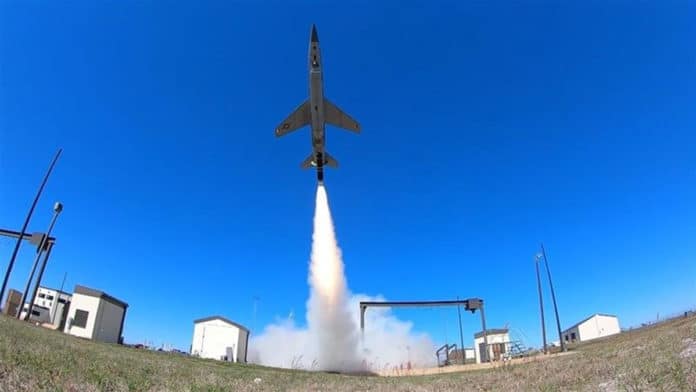The U.S. Air Force has flight-tested the Autonomous Core System (ACS) for the Skyborg combat drone for the first time. The aircraft‘s “AI brain” was installed in a Kratos UTAP-22 tactical unmanned aerial vehicle and tested at Tyndall Air Force Base, Florida. It completed a flight of two hours and 10 minutes.
During the test, the ACS performed a series of foundational behaviors necessary to characterize safe system operation. The system demonstrated basic aviation capabilities and responded to navigational commands while reacting to geo-fences and adhering to aircraft flight envelopes. The aircraft also performed a series of coordinated maneuvers while being monitored from both airborne and ground command and control stations.
Termed Milestone 1 of the Autonomous Attritable Aircraft Experimentation, or AAAx, campaign, it is the first step in testing the ACS and begins a sequence of experimentation events planned over the next several months. Subsequent tests will demonstrate direct manned and unmanned teaming between aircraft and multiple ACS-controlled unmanned aircraft.
“We’re extremely excited for the successful flight of an early version of the ‘brain’ of the Skyborg system. It is the first step in a marathon of progressive growth for Skyborg technology,” said Brig. Gen. Dale White, program executive officer for fighters and advanced aircraft as the Skyborg PEO. “These initial flights kick off the experimentation campaign that will continue to mature the ACS and build trust in the system.“
The Skyborg Vanguard program aims to integrate full-mission autonomy with low-cost, attributable unmanned air vehicle technology to enable manned-unmanned teaming. Skyborg will provide the foundation on which the Air Force can build an airborne autonomous ‘best of breed’ system of systems that adapts, orients, and decides at machine speed for a wide variety of increasingly complex mission sets.
